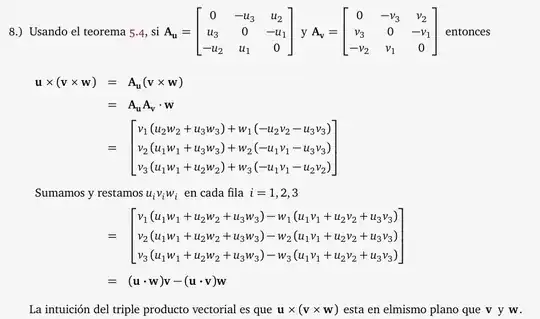I noticed something when I was doing a proof of the BAC-CAB rule, and wanted to check if my intuition was correct.
First, when I actually multiplied out $\vec{B} (\vec{A} \cdot\vec{C})-\vec{C}(\vec{A}\cdot\vec{B}) $ I noticed that I got the same thing. That is, the two quantities are equal. This makes sense since they are dot products. But that further implies that the expression goes to zero.
Well, that means that $\vec{A} \times (\vec{B} \times \vec{C})$ would have to be zero too. And when I thought about it it occurred to me that $\vec{B} \times \vec{C}$ describes a vector perpendicular to both B and C; it's orthogonal. But $\vec{A} \times$ (any vector) will describe a vector perpendicular to (any vector) and in this case, that's $\vec{B} \times \vec{C}$. That is going to be parallel with the vector described by $\vec{B} \times \vec{C}$ itself and that further implies that the cross product of the two is equal to zero. Which is equal to the BAC-CAB quantity above.
So, what is the big honking flaw in my reasoning here? :-)
